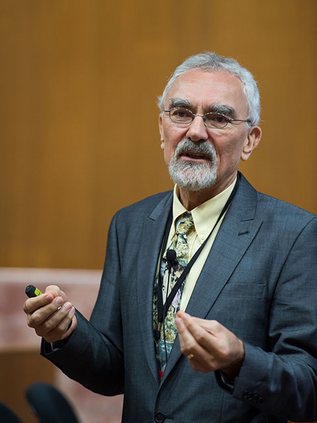A multi-user fog radio access network (F-RAN) is designed for supporting content-centric services. The requested contents are partitioned into sub-contents, which are then 'beam- formed' by the remote radio heads (RRHs) for transmission to the users. Since a large number of beamformers must be designed, this poses a computational challenge. We tackle this challenge by proposing a new class of regularized zero forcing beamforming (RZFB) for directly mitigating the inter-content interferences, while the 'intra-content interference' is mitigated by successive interference cancellation at the user end. Thus each beamformer is decided by a single real variable (for proper Gaus- sian signaling) or by a pair of complex variables (for improper Gaussian signaling). Hence the total number of decision variables is substantially reduced to facilitate tractable computation. To address the problem of energy efficiency optimization subject to multiple constraints, such as individual user-rate requirement and the fronthauling constraint of the links between the RRHs and the centralized baseband signal processing unit, as well as the total transmit power budget, we develop low-complexity path- following algorithms. Finally, we actualize their performance by simulations.
翻译:多用户雾无线电访问网络(F-RAN)旨在支持内容中心服务。 所请求的内容被分割成子内容, 然后由远程无线电头(RRHs)组成“ 光束”, 以便传送给用户。 由于必须设计大量光线设计, 这构成了计算上的挑战。 我们通过提出一个新的常规化零强迫波形(RZFB) 类别来应对这一挑战, 以直接减轻内容间干扰, 而“ 内容间干扰” 则通过用户端连续取消干扰来缓解。 因此, 每个光束由单一真实变量( 适当的高斯- 西安信号) 或一对复杂的变量( 不适当的高斯信号) 来决定。 因此, 决策变量的总数会大大减少, 以方便可移动的计算。 为了解决能源效率优化问题, 受多种制约, 如个人用户比率要求 和“ 内存” 和中央基带信号处理器之间连接的前沿限制, 由单一真实变量( 适当的高斯- sian 信号发送) 或由一对一对一双复杂变量( ) (不适当的高斯信号信号信号信号传输) 决定, 最后我们通过模拟性 发展低电算法 。










